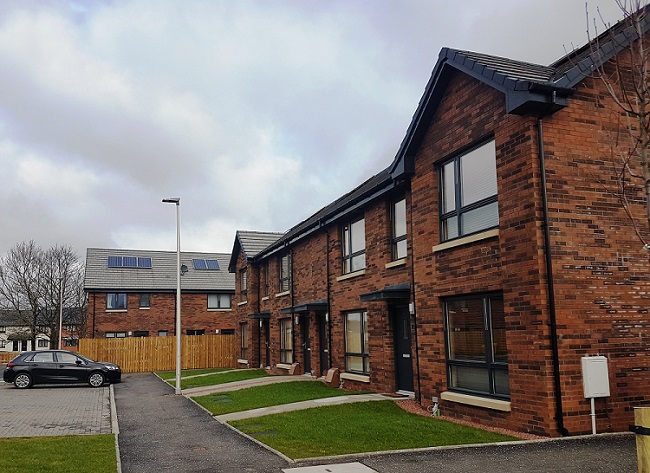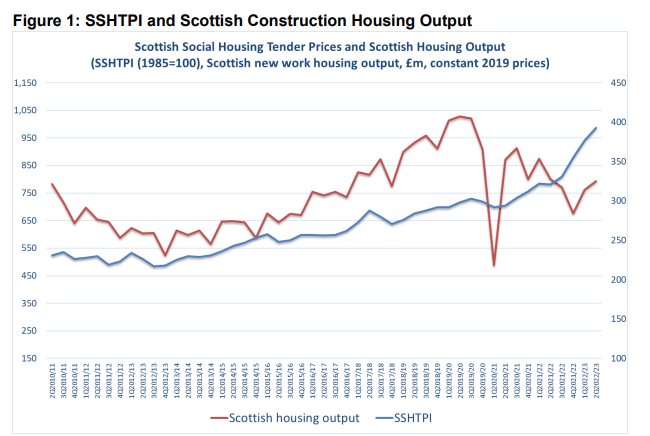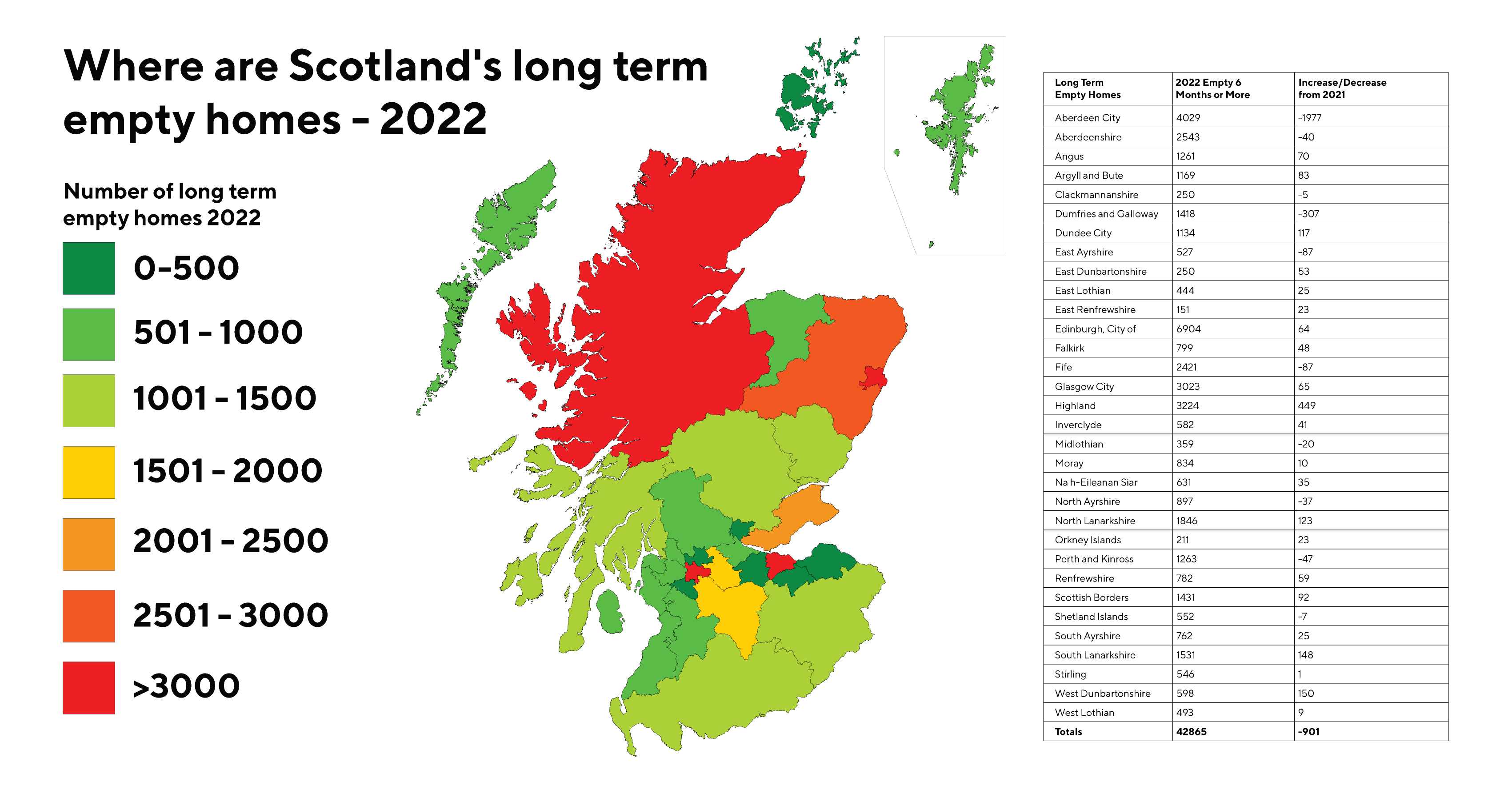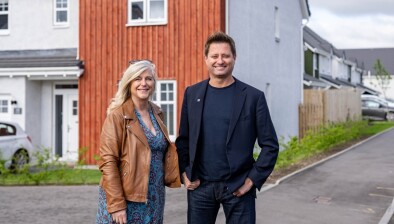New statistics show ‘worrying’ drop in housing starts

Housebuilders have highlighted a “worrying” drop in the number of new homes being started in Scotland as the accumulated shortfall of homes of all tenures built since 2007 has grown to over 110,000.
Quarterly statistics on housebuilding and affordable housing supply, published yesterday by Scotland’s Chief Statistician, revealed there were 21,825 all-sector new build homes completed in Scotland in the year to end of June 2022.
This is an increase of 9% (1,806 homes) on the 20,019 completions in the previous year. Increases were seen across private-led new build completions (4% or 615 homes), local authority new build completions (27% or 540 homes), and housing association new build completions (21% or 651 homes).
Meanwhile, the number of new build homes started across all sectors decreased by 13% (2,765 homes), with 19,060 starts in the year to the end of June 2022, down from 21,825 starts in the previous year. Private-led new build starts decreased by 15% (2,611 homes) and local authority new build starts dropped by 12% (234 homes), whilst housing association new build approvals increased by 3% (80 homes).
Separate figures published as part of the UK House Price Index show a total of 12,013 private new build sales transactions in Scotland in the year to the end of August 2022, up 4% (508 transactions) on the 11,505 transactions recorded in the year to end of August 2021.
The latest social sector new housebuilding figures for the year to end September 2022 show an increase of 17% (982 homes) to 6,704 completions, with local authority completions rising by 40% (799 homes) to 2,792 and housing association completions up by 5% (183 homes) to 3,912.
However social sector starts fell by 16% (797 homes) to 4,161, with local authority starts increasing slightly by 1% (11 homes) to 1,910 and housing association approvals decreasing by 26% (808 homes) to 2,251.
Jane Wood, chief executive of sector body Homes for Scotland, said: “Given we have a critical shortage of homes, the 1,806 increase in the number completed in the year end to June 2022 is welcome. Disappointingly, however, this is more than offset by the 2,765 drop in the number of new homes started and will further add to the shortfall of more than 110,000 that has accumulated since 2007.
“Figures also show that the number of social sector starts in the year end September 2022 fell by 16 per cent, reflecting the significant concerns we first raised with Scottish Government officials last April regarding the viability of contracts in light of massively increased costs (reported at +22 per cent in the latest Scottish Social Housing Tender Price Index) and which we believe contributes to this drop.”

Ms Wood added: “This has serious implications for the Scottish Government’s target of 110,000 homes by 2032. In light of the interdependencies between social and private housing delivery, it is vital that the Scottish Government looks to take a pragmatic all-tenure approach to addressing the many barriers that exist, and that it recognises the additional impact that regulatory change can have on its housing ambitions.
“Critically, policy decisions must be underpinned by relevant and contextual data and evidence. We are committed to working with the Scottish Government to identify and resolve any gaps that exist so that ongoing and future policy does not negatively impact the number of homes that Scotland requires to meet the needs and aspirations of its people, and value our ongoing discussions and collaboration.”
Affordable Housing Supply Programme
Separate quarterly statistics on the Affordable Housing Supply programme show there were a total of 2,565 affordable homes completed in the latest quarter July to September 2022. This brings the total number of affordable homes completed in the 12 months to the end of September 2022 to 9,449, an increase of 2% (219 homes) on the 9,230 homes completed in the previous year. There were increases in the number of completions for social rent by 17% (1,127 homes), however affordable rent completions decreased by 28% (387 homes), and affordable home ownership completions fell by 42% (521 homes).
Meanwhile, there were 1,028 affordable homes approved in the latest quarter July to September 2022, which brings the total number of affordable homes approved in the 12 months to the end of June 2022 to 7,160, a decrease of 16% (1,414 homes) on the 8,574 homes approved in the previous year. There were decreases in the number of approvals for social rent (by 13%, or 813 homes), affordable rent (by 18%, or 195 homes), and affordable home ownership (by 37%, or 406 homes).
There were 2,172 affordable homes started in the latest quarter July to September 2022, which brings the total number of affordable homes started in the 12 months to the end of September 2022 to 8,256, a decrease of 19% (1,877 homes) on the 10,133 started in the previous year. There were decreases in the number of starts for social rent (by 11%, or 804 homes), affordable rent (by 37%, or 548 homes), and affordable home ownership (by 42%, or 525 homes).
Quarterly affordable housing supply statistics are used to inform progress against the Scottish Government’s affordable housing delivery targets, in which the ambition is to deliver 110,000 affordable homes by 2032, of which at least 70% will be for social rent and 10% will be in remote, rural and island communities.
There have been a total of 4,927 completions so far against the 110,000 target across the period 23 March 2022 to 30 September 2022, consisting of 4,188 (85%) homes for social rent, 418 (8%) for affordable rent, and 321 (7%) for affordable home ownership
Figures on the remote, rural and island communities element of the target are planned to be reported on as part of future annual affordable housing supply out-turn reports, although we are considering whether it is feasible for these figures to be reported on a quarterly basis in addition to this.
Long-term empty and second homes
The Scottish Empty Homes Partnership (SEHP) has welcomed a fall in the number of long-term empty properties in Scotland but warned the cost-of-living crisis may make it harder to sell homes or refurbish empty properties in the year ahead.
The Scottish Government statistics show the number of long-term empty properties fell for the second consecutive year in 2022. Compared to 2021 the total number of long-term empty homes fell by 2% from 43,766 to 42,865.
Despite an overall fall in the number of empty properties, there was a mixed picture in different parts of the country. Three local authorities (Aberdeen City, Dumfries and Galloway, East Ayrshire) saw reductions of more than 10% in the number of long-term empty properties, while seven (West Dunbartonshire, East Dunbartonshire, East Renfrewshire, Highland, Orkney Islands, Dundee City, South Lanarkshire) saw increases of more than 10%.

Other key statistics in the statistics show:
- The number of homes empty for 6 to 12 months has gone down from 15,912 to 15,173 a decrease of 4.64%. This follows a 5.18% decrease in 2021.
- The number of homes empty for more than 12 months has gone down from 27,854 to 27,692 a decrease of 0.58% following an 8.83% decrease in 2021.
Shaheena Din, national project manager for Scottish Empty Homes Partnership, said: “It is encouraging that the number of long-term empty properties has fallen again this year. It’s particularly good to see that the number of empty homes in Aberdeen fell by almost a third, reversing a trend of rising numbers there for several years.
“However, it is a concern that there have been some large increases in other parts of the country, and we know that the cost of living crisis may make it harder to sell or refurbish empty properties in the year ahead.
“At the same time, rising prices mean that many people are struggling to afford the cost of renting or buying a home. Empty homes give us an opportunity to develop innovative approaches to address the housing crisis and increase the supply of social and affordable housing. This will be a key topic at this year’s Empty Homes Conference, “Reduce, reuse, revitalise.”















